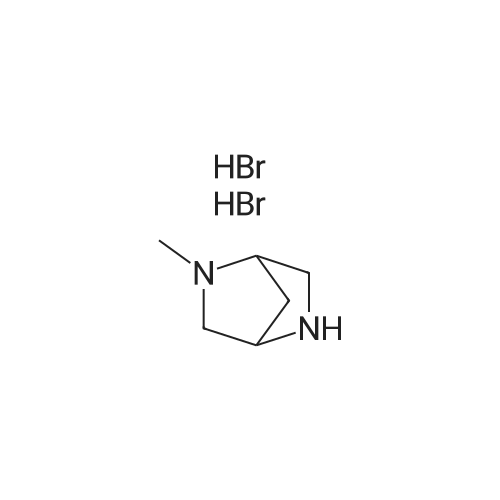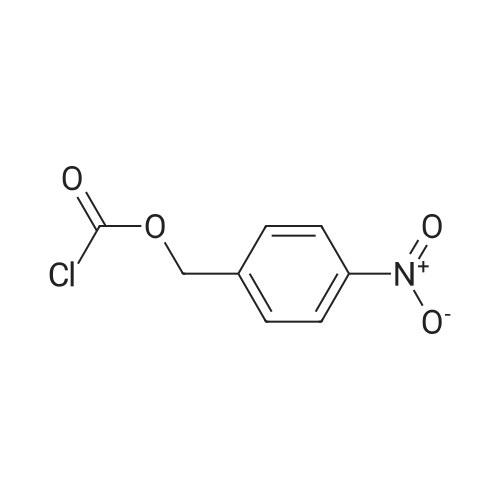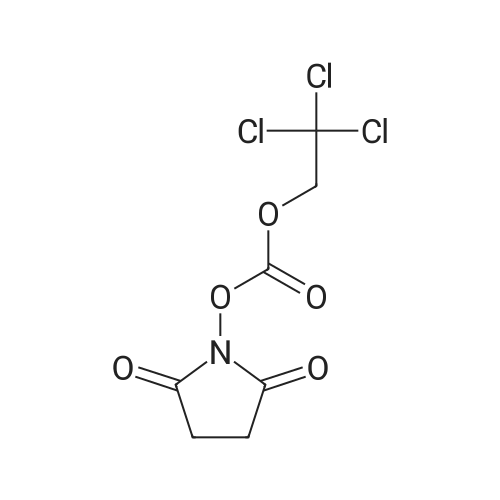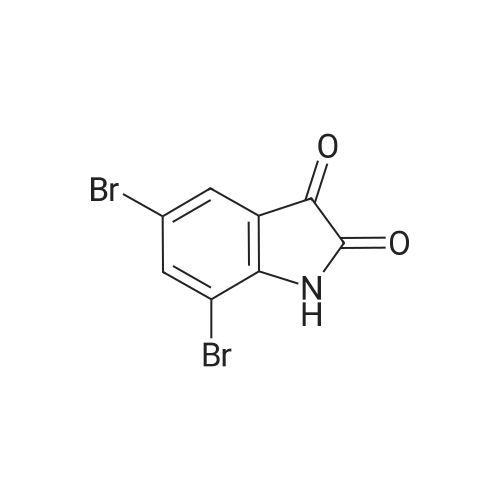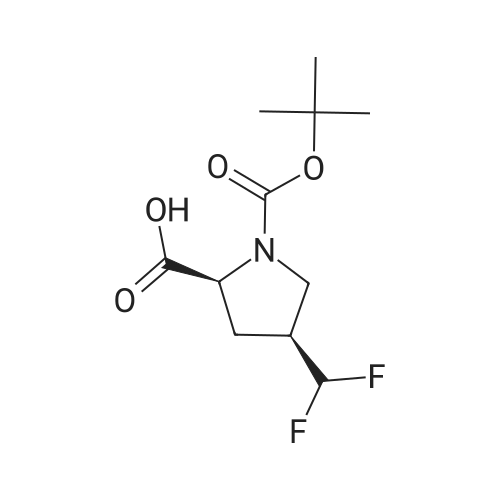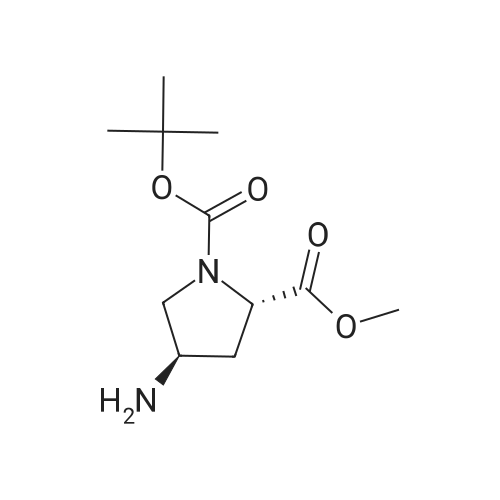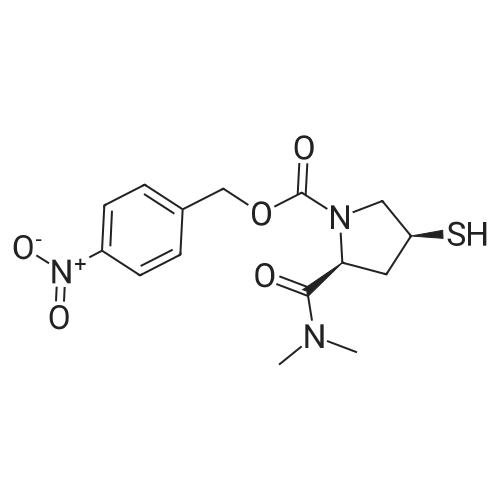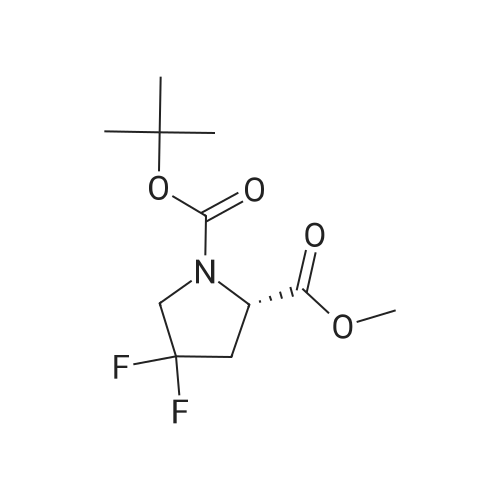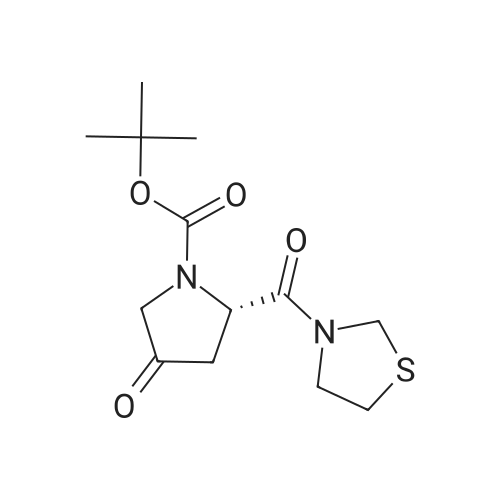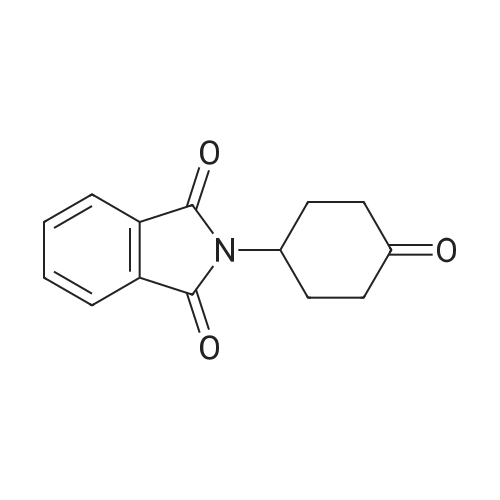| 80% |
With sodium hydroxide; In water monomer; toluene; at 0 - 20℃; for 2h;Inert atmosphere; Schlenk technique; |
trans-4-Hydroxy-L-proline (SI, 1.0 g, 7.6 mmol, 1.0 eq.) was dissolved in aqueous NaOH (0.5 M, 34 mL) and cooled in an ice bath. At 0 - 5 C, 4-nitrobenzoylchloroformate (1.9 g, 8.6 mmol, 1.1 eq.) in toluene (25 mL) was added dropwise. The bi-phasic mixture was stirred for two hours, after which the toluene (30 mL) was added and the phases separated. The aqueous phase was extracted with toluene and the combined organic phases extracted with aqueous NaOH (0.5 M). The aqueous phases were combined, adjusted to pH = 1 by adding cone. HCI and extracted with ethyl acetate (3 times). The extract was dried over sodium sulfate, filtered and concentrated in vacuo. Thus, compound 1 (1.89 g, 6.1 mmol, 80%) was obtained as off-white solid. ESI-LRMS for Ci3Hi5N207+[MH+]: calcd. 311.1 found 311.2 |
|
|
Trans-4-hydroxy-L-proline (II) was added to a solution of sodium hydroxide in water at 0-5 C, and stirred to get a clear solution, followed by p- nitrobenzyloxycarbonyl chloride in dichloromethane (MDC) was added and stirred till completion of reaction. at 0-5 C. To this reaction mass sodium hydroxide solution was added and the layers were separated. To the aqueous layer methanol was added and pH was adjusted to acidic using sulphuric acid at 0-5 C. The solid obtained was filtered, washed with water and dried in vacuum at 50C to afford the title compound (III) as colorless crystals. |
| 31.95 kg |
With sodium hydroxide; In dichloromethane; water monomer; at 0 - 5℃; for 5h;Large scale; |
20L reactor water 12kg,1kg sodium hydroxide, stirred and dissolved, cooled to 25 ~ 30 ,Add L-hydroxyproline 15kg, stirring to dissolve,Cool to 0 ~ 5 ,The temperature was controlled at 0 ~ 5 2.7kg of p-nitrobenzyl chloroformate and 3kg of dichloromethane were added dropwise.Dropping about 2 hours, dropping is completed,Keep stirring 0 ~ 5 for about 3 hours. Detection reaction is complete.The dichloromethane phase was separated, the aqueous phase was washed with 3 kg of dichloromethane, the aqueous phase was separated,Control temperature but 15 degrees,Concentrated sulfuric acid adjusted to pH 2, cooled to 0 filtration,Washed, dried in the product(5) To a solution of (2S, 4R) -4- hydroxy- 1 - (((4-nitrobenzoyl) oxy) carbonyl) pyrrolidine-31.95kg |
|
With sodium hydroxide; In water monomer; toluene; at -5 - 0℃; for 1.25h;pH 9.0; |
In a 500mL three-neck bottle added purified water 192g, add 15.3g of sodium hydroxide, stir and dissolve, and cool at 0 C; add 3g of 3-hydroxyproline, stir and dissolve; cool down at -5 C, added the drops of about 180g of p-nitrobenzyl chloroformate toluene solution, after about 1 hour, the drop is completed and pΗ=9; continue to stir for 15 minutes, and then let stand for 20 min, dispense, and obtained lower aqueous phase; in the lower aqueous phase added toluene 63mL X 3 and wash three times, stand still; control the internal temperature at 10 C, and add 6N hydrochloric acid to the aqueous phase, add dropwise until the water phase becomes turbid and stop adding, pH=4, add a small amount of seed crystals and stir until more crystals are precipitated, continue to add hydrochloric acid at pΗ = 2 (a total of about 5g of 6N dilute hydrochloric acid is required), cool down at 0 C, heat 1h suction filtration, wash with pure water to pΗ = 3, obtained compound I hydrate product. |

 Chemistry
Chemistry
 Pharmaceutical Intermediates
Pharmaceutical Intermediates
 Inhibitors/Agonists
Inhibitors/Agonists
 Material Science
Material Science















 For Research Only
For Research Only
 120K+ Compounds
120K+ Compounds
 Competitive Price
Competitive Price
 1-2 Day Shipping
1-2 Day Shipping







